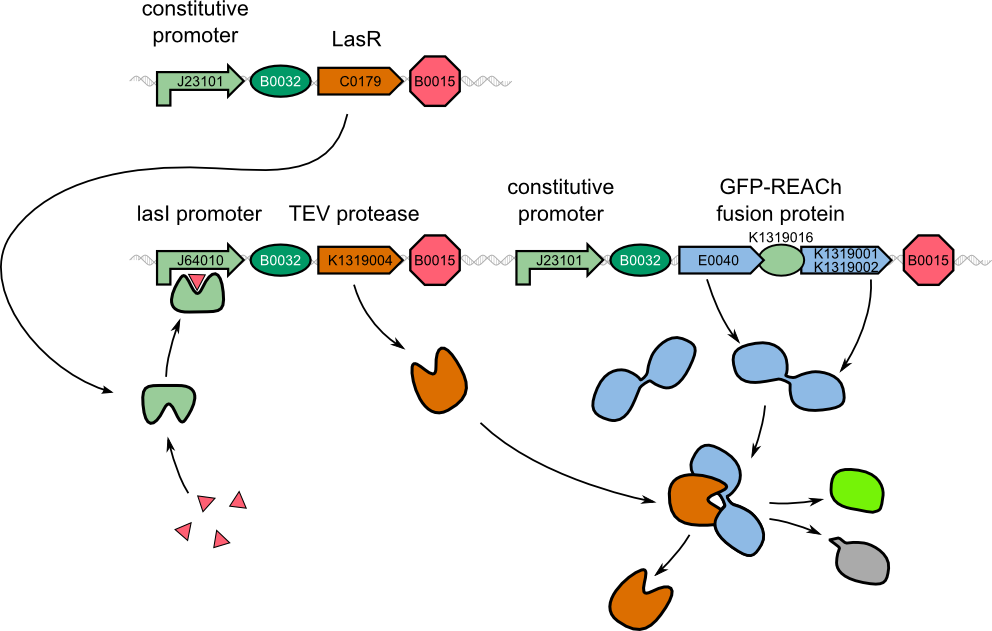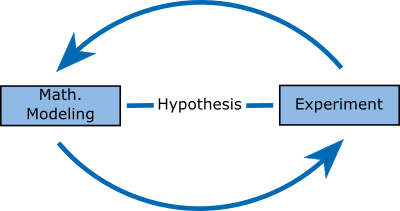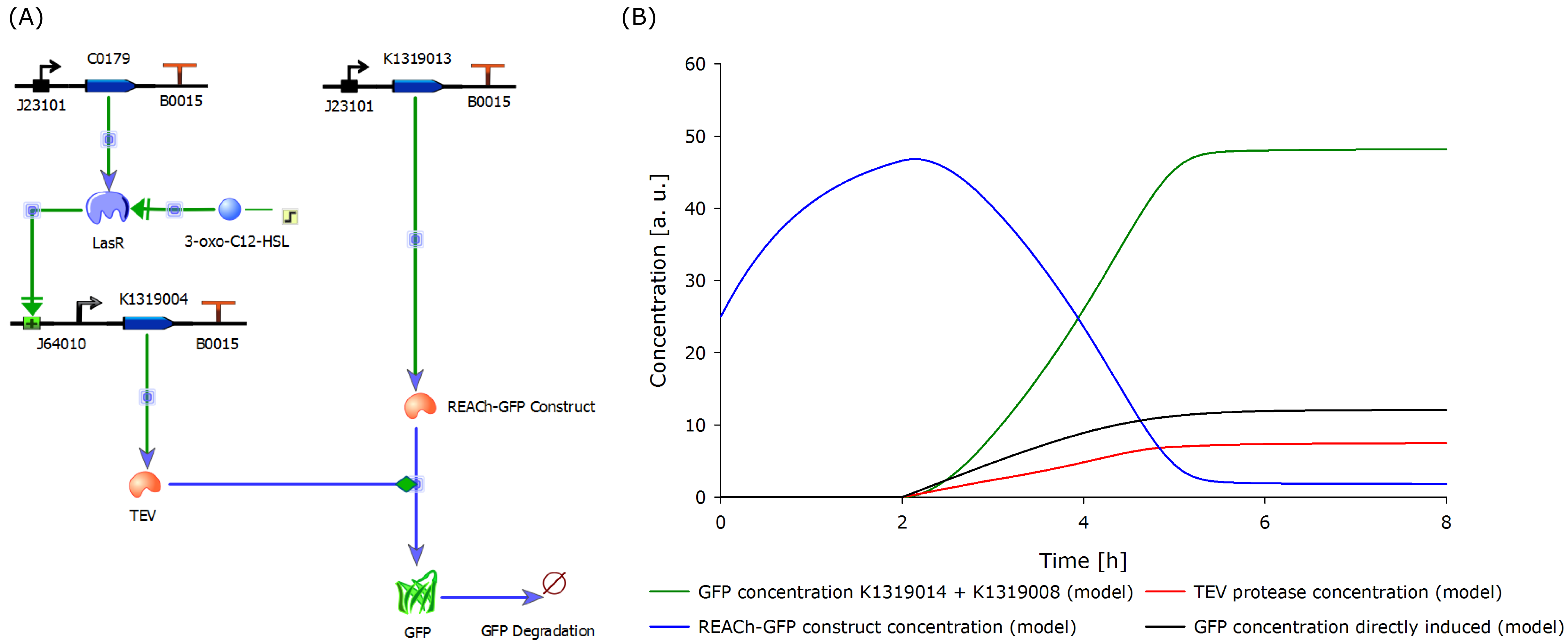Team:Aachen/Project/Model
From 2014.igem.org
(→Modeling) |
(→Modeling) |
||
| Line 28: | Line 28: | ||
Due to the complexity of the quorum sensing circuit, we assembled an IPTG-inducible TEV protease instead of the 3-oxo-C<sub>12</sub>-HSL-inducible version. | Due to the complexity of the quorum sensing circuit, we assembled an IPTG-inducible TEV protease instead of the 3-oxo-C<sub>12</sub>-HSL-inducible version. | ||
| - | Although the modeled and the existing double plasmid system differ regarding the induction mechanism, a high correlation | + | Although the modeled and the existing double plasmid system differ regarding the induction mechanism, a '''high correlation between the model predictions and the experimental data''' was observed. However, a new model was designed according to the existing and functional IPTG-inducible system. |
<center> | <center> | ||
| Line 39: | Line 39: | ||
It is shown that the fluorescence response in chips develops later than in the characterization experiment in shake flasks. This is because the solid agar chip provides a higher diffusion barrier than liquid medium as used in the shake flasks. Further, a high oxygen transfer rate in shake flask cultivations enhances the rate of fluorescence development, as oxygen is needed for GFP production, in comparison to the cultivation in chips. | It is shown that the fluorescence response in chips develops later than in the characterization experiment in shake flasks. This is because the solid agar chip provides a higher diffusion barrier than liquid medium as used in the shake flasks. Further, a high oxygen transfer rate in shake flask cultivations enhances the rate of fluorescence development, as oxygen is needed for GFP production, in comparison to the cultivation in chips. | ||
| - | The model predictions correlate with the data generated from the characterization experiments, thus validating our molecular approach. With an iterative cycle of modeling, a faster and stronger fluorescence signal could be proven both theoretically and empirically. | + | The model predictions correlate with the data generated from the characterization experiments, thus validating our molecular approach. With an iterative cycle of modeling, '''a faster and stronger fluorescence signal could be proven both theoretically and empirically'''. |
{{Team:Aachen/BlockSeparator}} | {{Team:Aachen/BlockSeparator}} | ||
Revision as of 03:18, 18 October 2014
|
|
 "
"



